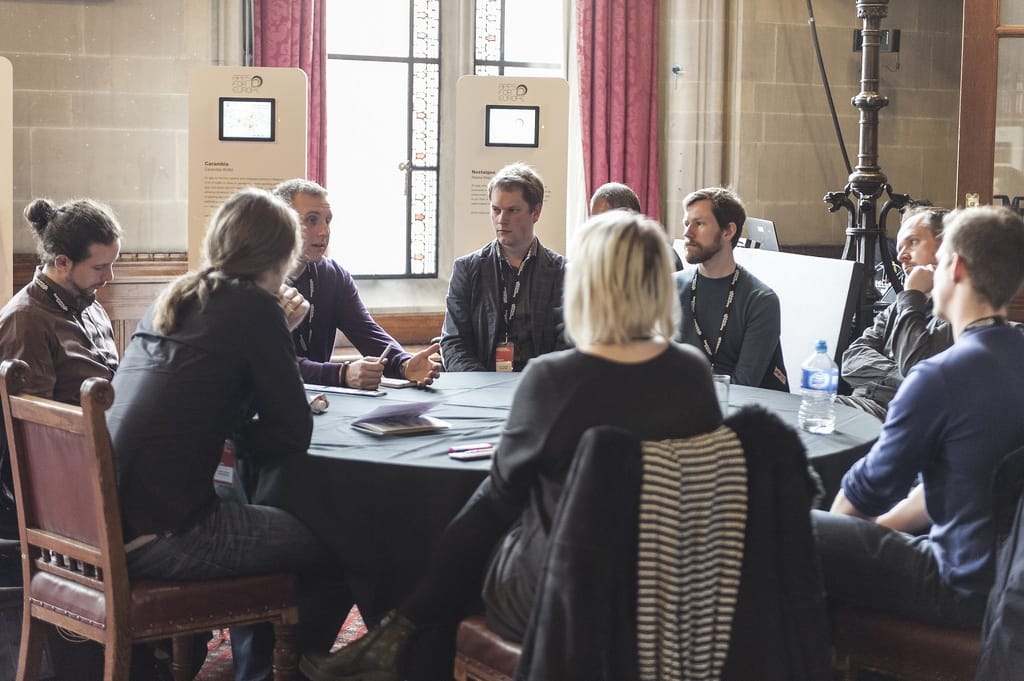In our recent post we talked about the fact that in spite of the effort leaders are putting in to creating healthy cultures, things can still go awry. Even if you’ve defined your values and periodically recognize people for demonstrating them, you may feel like your team isn’t embracing culture the way you wish they would. Signs that something’s gone awry include a lack of trust, interpersonal conflict, and feeling frustrated as a leader.
In an ideal world, people come to work every day focused on the goals of the company. When there are disagreements or if priorities aren’t clear, they calmly engage their peers or manager for clarification. If you’ve been on a team that operates this way, you know what it means to be part of a high performing team. You also know that this kind of team doesn’t magically form on its own – it’s a result of the leader’s relentless focus on culture and team dynamics.
The Cost of Conflict
Did you know conflict costs companies $359 billion every year, in the US alone? Not all conflict is bad or should be avoided. Healthy conflict that spurs debate and generates creativity makes companies better. But we’re talking about the other kind – conflict that is disruptive and derailing.
Silently standing by when you see conflict erodes culture quickly and with little warning. Conflict happens naturally, and is more likely during times of stress, growth, and change – things experienced daily by large companies and startups alike. There’s no avoiding conflict, so what can you do? Here are a few ways to foster healthy team dynamics.
Why Styles Matter
A common way to help team members understand one another’s styles, strengths, wants and needs is to use a styles assessment like Myers Briggs, TotalSDI, or DiSC. You’ve probably done a personality assessment before, so you know the drill. Each person fills out a set of questions, gets a report indicating his/her dominant style, then shares it with the team.
No style is good or bad, right or wrong. What’s important is to increase understanding of all styles so that people who are different can work better together. Plotting styles across the team helps you see if your team is heavily skewed in one direction. What you want is a well rounded team with a variety of styles and strengths.
Setting Clear Expectations
Early in my career a new VP took over our team. He brought us together for an offsite where we did a styles exercise. He shared a key insight about himself that I’ll never forget. He was off the charts for “high control” (basically a control freak – no judgment). He told us we should share ‘work in progress’ and get his feedback before finalizing important projects. If we didn’t, he assured us we would feel frustrated because he would have feedback and ask for revisions. While his approach could have enraged us, instead it resulted in strong working relationships – because we knew what to expect. His self-awareness, and clear message about how to work with him effectively set the context we needed for a productive working relationship.
Appreciating Differences Improves Team Dynamics
Even if you’re not a styles expert, most people have a good grasp of Introvert vs. Extravert. It’s important for introverts to understand and appreciate the extroverts on the team. They are frequently best at relationship building and networking because they gain energy from being around other people. You’ll likely find extraverts in sales and recruiting roles. Extroverts on the other hand, need to respect their introverted peers who do focused, heads down work like crunching numbers and writing contracts. Extroverts may find these tasks draining, so they’re lucky to have peers willing to take on more solitary work.
Common language helps us not only understand but truly value styles unlike our own. If we all flex a little bit, like we did for my boss who wanted to see work in progress, it’s better for the team and company. Some people may not want to change, even a little. They wonder why the other person can’t just ‘make it work.’
My grandma liked to say that if each person in a marriage would just give eighty percent, they’d meet fifty-fifty. Remember that next time you’re trying to resolve a disagreement between team members.
Check out our workshop on Building more Effective Relationships and Productive Teams with TotalSDI (Assessment included) on April 17th. For more info visit our Eventbrite page here.














